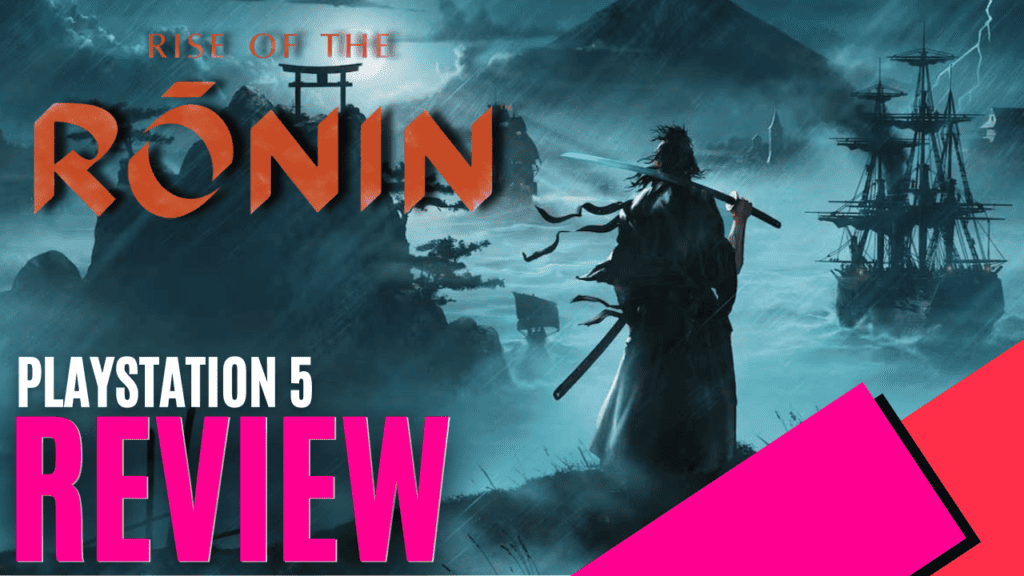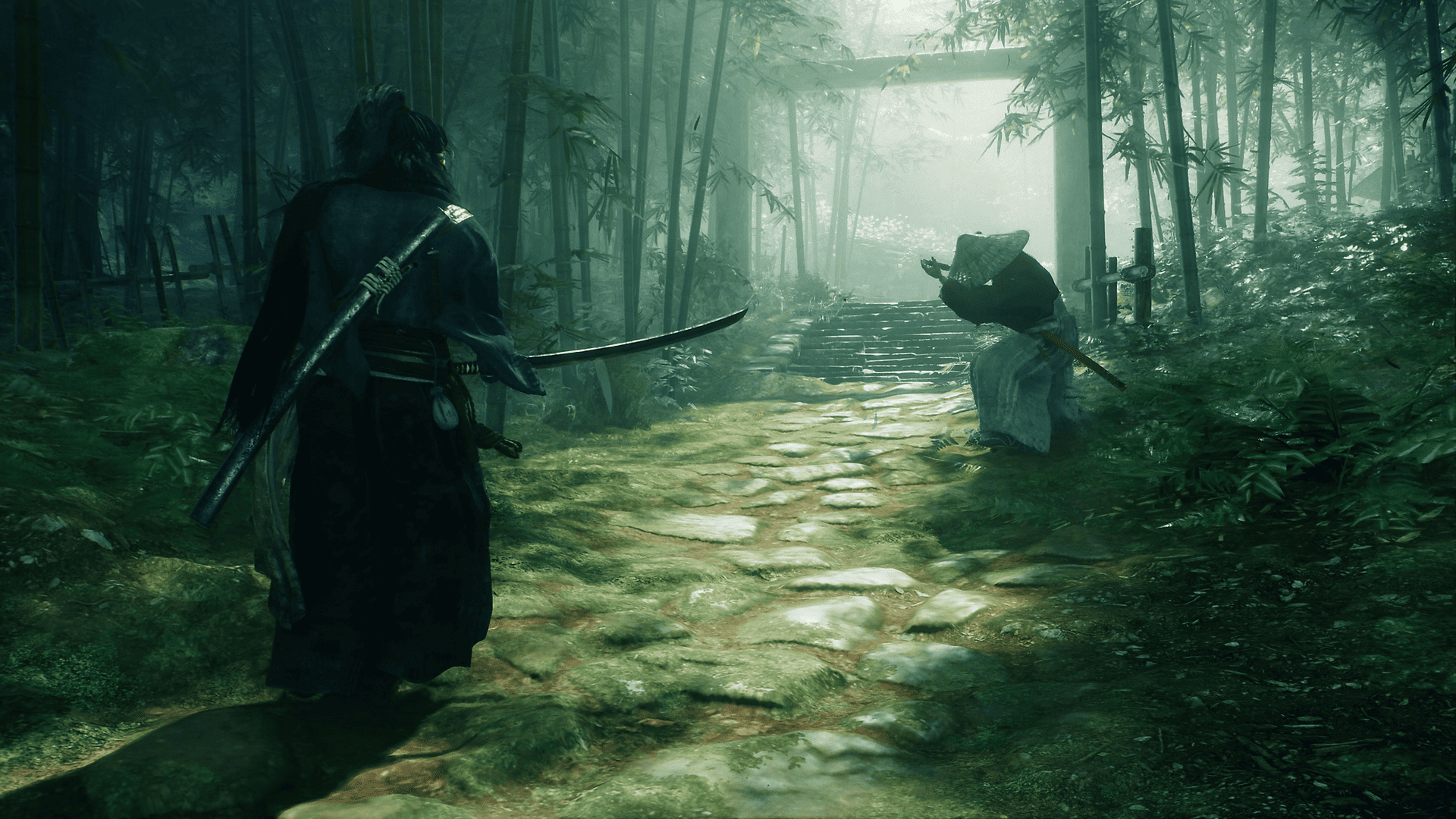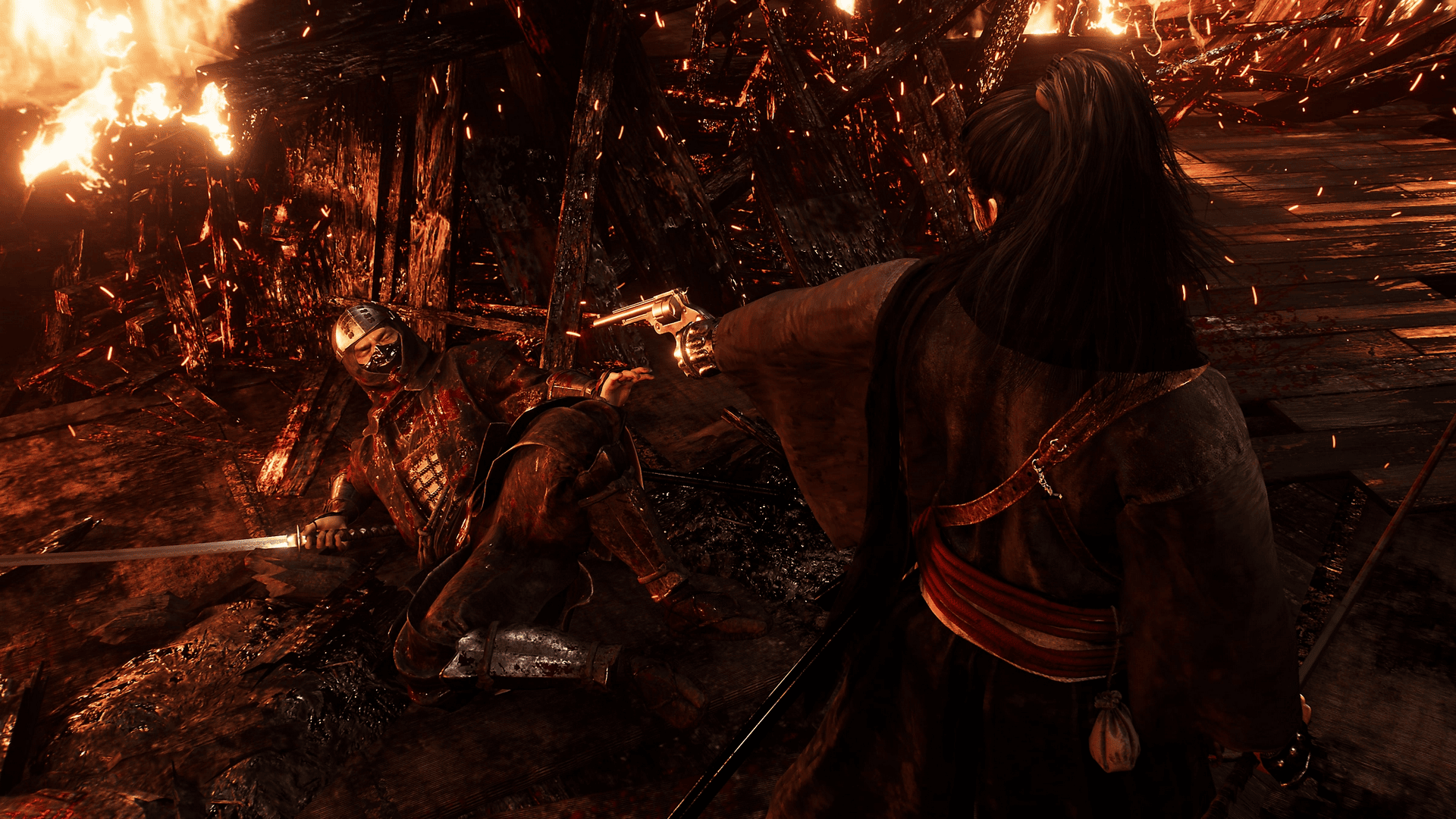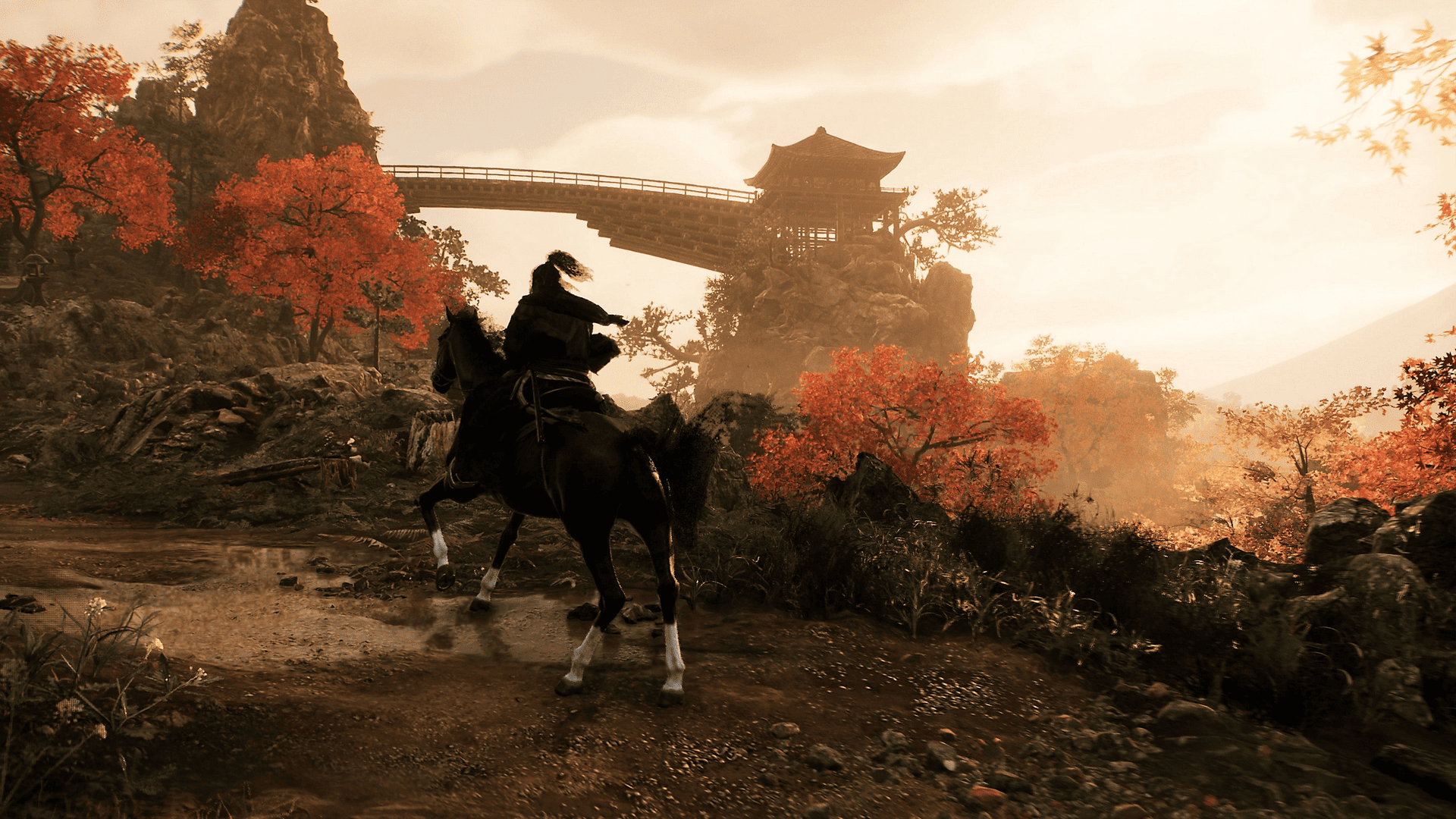
What is a ‘Ronin’? A lawless and masterless samurai. I have a deep-seated love for historical pieces in games, in particular anything of Asian or specifically Japanese orientation. I ate up everything games like ‘Trek to Yomi’ and ‘Ghosts of Tsushima’ had to offer. Developed by Team Ninja for Playstation, this action role-playing game is packed with historical characters that helped develop Japan while delivering an invigorating combat experience that Team Ninja is so famous for.
Rise of the Ronin is a very narrative-based adventure. Set in the final years of the Edo period, when Japan was in the grips of experiencing a civil war-like revolution between the Tokugawa shogunate and anti-shogunate agitators, you witness the horrors of rebellion. Meanwhile, a clan of warriors, train in seclusion for missions to protect Japan. Mortally attacked on a mission with your samurai partner ‘Twin Blade’, alone now, you decide to leave your clan, the ‘Veiled Edge’, to forge your destiny as a Ronin on a course of revenge.
Almost like a lost soul, your stance on this post-feudal Japan is complicated as the unrest rises between the followers of the old and the new world as East meets the West. Forging allies across the land, you must travel the countryside of Japan looking for clues behind a mystery samurai with sinister motives. The timeline of this era of Japan is fascinating and honestly, I spent hours at a time playing just to see what happened next and if my influence had an impact on history.
You are welcomed into Rise of Ronin with a very intricate customisation screen for not only yourself but your Twin Blade partner also. It is quite impressive indeed. You will need to choose from six weapon-type classes too, but thankfully this doesn’t matter too much as a key dynamic of singleplayer is you can swap between at least two other characters in most missions, giving you a taste of weapons you may have sidelined.

Team Ninja, known for notoriously difficult combat style games, has this time round made their game accessible to the wider audience. If you are chasing the traditionally difficult experience, then playing on hard (Dusk) is a must but story mode (Dawn), the easiest option, is still a challenge where mastering of moves is essential. Combat is based on a two-button system of attacks, most importantly a parry, jump, slide and crouch for stealth advantage. Most attacks alternate between sweeping attacks and overhead. As you open out to the Western world, guns and pistols will be added to your arsenal or use throwables taking the traditional route of smoke bombs and shurikens.
Combat also relies on the management of your ‘Ki’, a stamina-like bar for you and your enemies that depletes on enemies as you make more impactful moves. The flick of your sword to remove the blood and boost your Ki is also one of the coolest things mid-combat I have ever seen. There is also a stance system in place, with enemies weaker to different techniques, making for another important and invigorating element to consider as you rush in to hack away at heads and limbs. Personally, I am not one for brutally hard combat like Team Ninja’s ‘Nioh’ franchise, but I appreciated this style as it was still quite satisfying and refreshing with the mixture of melee and gunplay, you can even throw in a bow if that tickles your fancy.
As you traverse this open world, via fast travel, horse, grappling hook or glider (each more fun than the next), you will meet fascinating people you can ally with. Doing Bond Missions with these characters, giving them gifts or just conversing with them will increase your bond with them, supplying you with equipment and items.
These allies are important as they align with anti-shogunate or shogun sides and will assist in main missions where three people are needed, or this is where friends can drop in for a nifty 3-player co-op campaign. Other types of objectives will also litter the map to build trust with regions or train you with your weaponry and your glider, and completing any sort of mission will reward you handsomely with weapons, outfits and materials which all increase the armour stats, defence and attacking ability of your characters.

You will also have home bases to collect your thoughts. This is where you can send your beloved dog off on a pilgrimage across other people’s servers for pats, culminating in him bringing home more supplies over a certain amount of time. Not only that, the collectibles of wrangling cats have uses too, as these too, can be lent out as a concierge service to gather materials over time. Decorating this base will also grant perks to bonds, money drops and weapon proficiency. You can even redesign and transmog your outfits and appearance here. I was astonished by how much you could do even in your downtime.
Skill points are earned through good or bad deeds, depending on what side of the fence you look at it from, defeating bosses or by praying at shrines. These can be used in a skill tree under four topics; Strength, Dexterity, Charm and Intellect. These unlock new things such as move sets in Strength, assassinations in Dexterity, dialogue options like lying in Charm, upgrades and crafting in Intellect and much more. The skill tree keeps things interesting and really does have an impact on the progression of your character as enemies get harder to chip away at their Ki.
The abundance of loot you are rewarded with has armour scores, as well as an increasing number of stats depending on the quality of gear. Like most RPG games, they are thankfully colour-coded so you know if it is progressively better. Each also looks very different especially outfits which I was gleeful about; changing up the look of my Ronin each time. Additionally, you can collect materials across the land, to craft your consumables or upgrade weapons. On easy, I found this unnecessary to use but this obviously has greater implications for where resources or drops of gear aren’t as abundant in harder difficulties.
The game has copped a lot of heat for its graphical direction online and while I wouldn’t say it is the top of the range sadly, it is decent enough and screams Team Ninja stylings but toned down with muted colours and textures, a move away from their traditionally dark and twisted fantasy. The characters are well-designed, memorable and some very endearing indeed. The environments are mostly interesting from the gorgeous cherry blossom-strewn countryside to the rooftops of the bustling developing cities. I say mostly as some of the villages dotted around the countryside are a bit empty or repetitive in appearance not making each stand out from the next.

On the contrary, the sound work is impeccable. Japanese folk music delivers ambience as you travel, immersive combat sound effects of clashing blades build suspense and superbly voice-acted dialogue sets the scenes up perfectly especially in cutscenes. The experience is even better if you decide to use authentic Japanese with subtitles.
In my time with Rise Of The Ronin, I often switched between graphical, performance and raytracing modes. In performance mode, I found it ran decently, though, while in graphical it did in rare instances become framey with mild graphical glitches to flowy textures such as hair or clothing.
Unfortunately, through PlayStation Plus I wasn’t really able to test the online matchmaking ahead of the games launch. After begrudgingly activating a subscription to online play, I did try but could not find any online players’ games to join. Even after hosting multiple missions for people to drop into my own session as well, no one ever turned up. The concept is a great idea though, with friends being able to join your open world via the loghouse home base, sadly though, during the pre-release launch review this wasn’t viable yet to test out. I do feel, however, that most people like myself will prefer to play alone, friends can sometimes be like wrangling cats, which you already experience in this game.
Rise Of The Ronin is a deep insight into the history of Japan from the perspectives of many individuals while also carrying its own parallel narrative of your character. A massive feat in itself. The open world is full of things to do and the combat is strategically paced but also refreshing as you upgrade it with your stances, equipment and skill trees. Any issues I had with this title were very surface-level and didn’t ruin my time at all. Rise Of The Ronin was an intriguing horse in the race of games so far this year, and I lapped up everything it had to give. It might be more subtle from Team Ninja but it’s just as impressive.

The Good
- Immersive narrative
- Intricate customisation
- Accessible and rewarding combat
- Stance system
- Variety of weaponry and armour
- Many mission types
- Crafting of consumables
- Multiple traversing systems
- Progressive skill tree
- Audio is impeccable
- Singleplayer and Co-op ability
The Bad
- Mild graphical glitches in graphical mode
- Empty/repetitive villages
- Not showcasing the graphical power of the PS5








